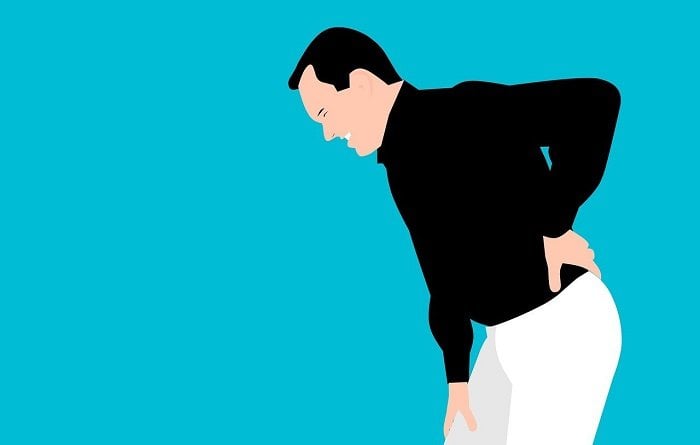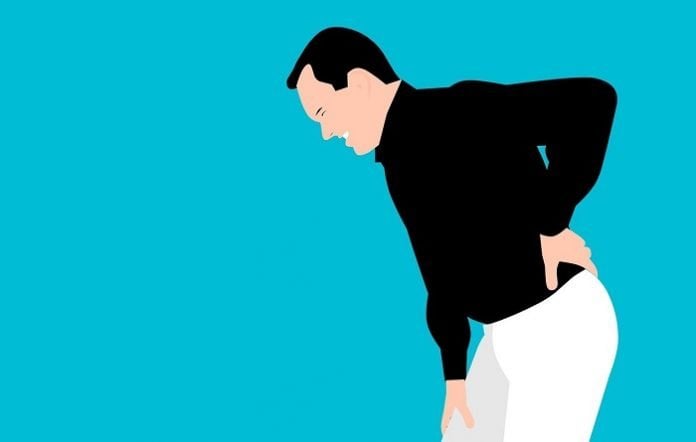We hope you all are staying happy and healthy during these uncertain times. Since a lot of the world is more sedentary than ever, I wanted to take some time to talk about ways to reduce and/or avoid back issues and pain.
Tips to Cope With Back Pain
Before I get into specific exercises that help you cope with back pain, I wanted to share some advice on how to reduce and/or avoid experiencing chronic pain and discomfort.
Stay active!
Sitting in one position for long periods of time can add to tightness, pain, discomfort, and lactic acid build-up in the body.
With this being said, it’s very important to at least walk for 5-10 minutes every hour.
I highly recommend setting a timer every 1-2 hours that alerts you to get up, stretch, and move.
You should see the benefits of doing this within the first few weeks.
Posture Is Important!
How most people sit (rounded shoulders, raised shoulders, head hung low) takes the body out of postural alignment, which can create compensations that can lead to discomfort and pain.
Ergonomics is a very important field of study because it shows us how to healthily position our bodies during work hours.
A standing desk and an ergonomics-approved chair can be paramount based on the individual.
Please remember to sit with shoulders back, head facing forward, engage the core, and sit up straight with all vertebrates stacked.
Practice Self-Care
Things such as massage, foam rollers, acupuncture, chiropractors, Epsom salt products, and stretching can greatly reduce back pain.
We can’t treat our bodies like work horses without giving ourselves time to recover, rest, and get back into proper postural alignment/equilibrium.
Be Mindful Of Movements During And Outside of Exercise
It’s important to be mindful of our daily movements too. For example, most people do not practice proper lifting mechanics.
If you need to pick something off the floor, it’s important to assume a squat position and lift with your legs, not your back.
Most people bend down to pick up something. This movement can easily throw out the back.
The spine is more fragile than we give it credit for. The smallest movement could tweak our backs. This is why we need to move mindfully and proactively.
Lift Smart!
When working out, it’s important to keep our spines in mind.
Don’t lift heavier than it’s safe for you to do so.
For those with back injuries, pains, and/or concerns, I suggest lifting on the lighter side. Less weight and more reps will have a better shot at protecting the back.
 Furthermore, when picking up and putting down weights, assume the same squat position mentioned in the previous section.
Furthermore, when picking up and putting down weights, assume the same squat position mentioned in the previous section.
When squatting and deadlifting, it’s important to lift with the lower extremities such as the lower abdominals, legs, and glutes.
Take Your Supplements!
While supplements aren’t a magical cure, they can help. Things such as collagen peptides, turmeric, and ginger can help with inflammation in the body, which in return can reduce pain.
Turmeric and ginger come in capsules. I usually recommend a collagen powder to my clients.
Exercises
Now that we’ve talked about methods that can help take care of the spine, I would like to go over specific exercises that are usually “back-safe.”
Please note, that workout programs should always be individualized, and those that have spine pain should consult their doctors before attempting any of the below exercises.
Lastly, there are more exercises that may be good for back pain. I am merely listing a few to get you thinking.
- Dead bugs
- Leg lifts
- Glute Bridges
- Bench Rows
- Calf Raises
- Toe Taps
- Tricep Dips
- Downward Dog
- Buttblasters
Better To Be Safe Than Sorry
Overtraining is real! It’s important to find the right balance between healthily challenging yourself and catering to your own physical limitations.
Every human has their own things to be mindful of. For example, I have scoliosis, which for the most part doesn’t limit me. However, it’s always important that I rest when my back tells me to.
If you have never done so, I highly recommend taking a physical and mental inventory of yourself to ensure you know your own limits.
Knowing yourself is paramount when it comes to health and wellness. We can’t ignore our hardships or hang-ups. Owning them and figuring out how to creatively and healthily handle them is the best plan of action for long-term health/wellness.
Lastly, please note that limits change over time. You at 30 will have different limitations than you at 60. With this being said, taking self-inventory is an on-going process.
Fitness journeys are fluid, and require constant introspection and attention to continue progressing/reaching your goals.
Pain is nothing to ignore. Ignoring it can only make matters worse in the long-run.
Wrap-Up
I hope this has given you all some helpful advice on how to better manage back issues, discomfort, and pain. We hope you can now better cope with back pain.
Please feel free to reach out with any questions or comments you might have here.
As always, thanks for reading and stay tuned!


